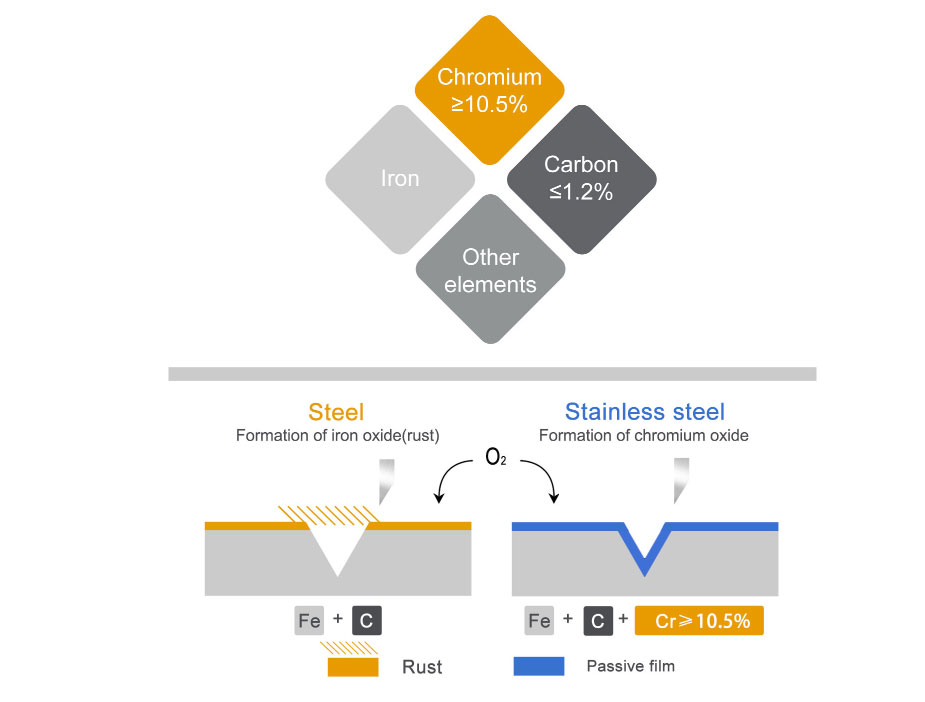What is Stainless Steel ?
Stainless steel is a steel alloy with increased corrosion resistance compared to carbon/alloy steel.
Stainless steel is an iron alloy that has a minimum Chromium content of 10.5 per cent. The Chromium
content produces a thin chromium oxide film on the steel’s surface called a passivation layer. This layer
prevents corrosion from occurring on the steel surface; the greater the amount of Chromium in the steel,
the greater the corrosion resistance.
The steel also contains varied amounts of other elements such as Carbon, Silicon and Manganese.
Other elements can be added to increase corrosion resistance (Nickel) and formability (Molybdenum).
Applications include food handling/processing, medical instruments, hardware, appliances, and
structural/architectural uses.

General Properties of Stainless Steel
Aesthetics
Stainless steel has a great variety of surface finishes, from matt to bright and including brushed and
engraved. It can be embossed or tinted, making stainless a unique and aesthetic material. It is often
used by architects for building envelopes, interior design and street furniture.
Mechanical Properties
Compared to other materials, stainless steel has strong mechanical properties at ambient temperatures
– it is steel after all! In particular, it combines ductility, elasticity and hardness, enabling it to be used in
difficult metal forming modes (deep stamping, flat bending, extrusion, etc.) while offering resistance to
heavy wear (friction, abrasion, impact, elasticity, etc.). Furthermore, it offers good mechanical behaviour
at both low and high temperatures.
Resistance to Fire
Stainless steel has the best fire resistance of all metallic materials when used in structural applications,
having a critical temperature above 800°C. Stainless steel is ranked A2s1d0 for fire resistance with no
toxic fume emissivity.
Corrosion Resistance
With a minimum chromium content of 10.5%, stainless steel is continuously protected by a passive layer
of chromium oxide that forms naturally on the surface through the reaction of the chromium with oxygen
from air or water. If the surface is scratched, it regenerates itself. This particularity give stainless steels
their corrosion resistance.
Cleanability
Stainless steel items are easy to clean, usual cleaning products (detergents, soap powders) are sufficient
and do not damage the surface. Stainless steel fully meets the requirements of decoration and cooking
utensils that require frequent and effective washing.
Recycling
Stainless steel is the “green material” par excellence and is infinitely recyclable. Within the construction
sector, its actual recovery rate is close to 100%. It is environmentally neutral and inert when in contact
with elements such as water and it does not leach compounds that might modify their composition.
These qualities make stainless steel ideally suited to building applications exposed to adverse weather,
such as roofs, facades, rainwater recovery systems and domestic water pipes. Stainless steel’s longevity
fulfils the requirements of sustainable construction, and effective erection, installation and low maintenance
guarantee the user an unrivalled service life.





